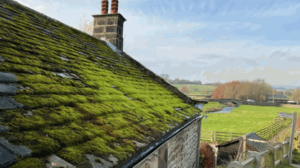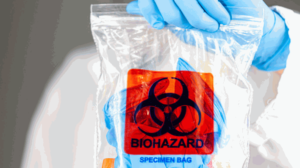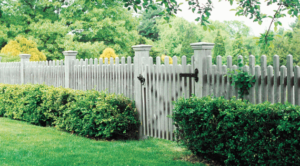Are you dealing with stubborn clogs in your drains and wondering if a drain unblocker could solve the problem?
We will explore the different types of drain unblockers available, including chemical, mechanical, and natural options. We will also address the common question of whether it is safe to use drain unblockers in toilets, along with alternative methods for unclogging your pipes.
Find tips on preventing toilet blockages in the future and valuable insights on maintaining a clear and functional plumbing system.

What Is Drain Unblocker?
A drain unblocker is a type of product or tool designed to remove blockages in various drainage systems, including the toilet and waste pipes, effectively unblocking blockages caused by everyday waste and debris.
There are different types of drain unblockers available in the market, such as chemical drain cleaners, enzymatic drain cleaners, and mechanical drain snakes. Chemical drain cleaners work by breaking down organic material, grease, and hair that cause blockages. On the other hand, enzymatic drain cleaners use natural enzymes to digest organic matter. Mechanical drain snakes are tools that physically dislodge blockages by rotating through the drain pipes. These products are effective in dealing with common causes of blockages like grease buildup, hair clogs, soap scum, and food residues.

What Are The Types Of Drain Unblockers?
There are various types of drain unblockers available, each employing different methods to clear blockages and ensure the proper maintenance of your drainage systems.
Take a look: How Much Does Drain Cleaning Cost
Chemical Drain Unblocker
Chemical drain unblockers, such as those available from Plumbworld, use powerful agents to dissolve blockages and limescale within pipes.
These drain cleaners typically contain caustic soda, which is highly alkaline and effective in breaking down organic materials like hair and soap scum. They often include sulphuric acid or hydrochloric acid to tackle more stubborn blockages caused by grease or food particles.
When applied to severe blockages, these chemical solutions react with the matter, generating heat that helps break down the blockages. However, handling them requires caution due to their corrosive nature, posing risks of skin and eye irritation if not used properly.
It is essential to carefully follow the instructions provided, including using protective equipment like gloves and goggles and ensuring proper ventilation during application.
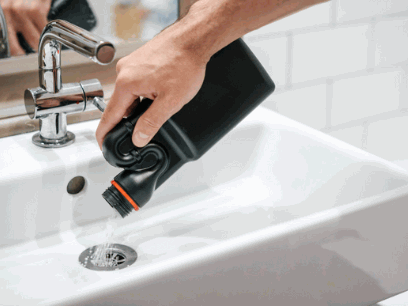
Mechanical Drain Unblocker
Mechanical drain unblockers, including tools like plungers, plumbing snakes, and flexible pan connectors, physically remove blockages through force or manipulation.
Plus these common tools, jetting machines, and electric drain rods are also popular choices for more stubborn obstructions. Jetting machines use high-pressure water to dislodge and flush out debris, making them particularly effective for clearing hard-to-reach clogs or tree roots.
Electric drain rods, on the other hand, are powered tools that rotate to break up blockages, often used in situations where manual tools are insufficient. These tools are versatile and adjustable, allowing for precise control and effective removal of various types of obstructions.

Natural Drain Unblocker
Natural drain unblockers typically use household items like bicarbonate of soda and vinegar to create a reaction that helps to remove blockages.
This method is often preferred by individuals seeking eco-friendly solutions since it avoids the strong chemicals present in commercial drain cleaners. The combination of bicarbonate of soda and vinegar forms a powerful yet safe foaming agent that can break down organic matter causing obstructions.
These natural remedies are particularly effective for minor blockages caused by grease, hair, soap scum, and food particles. They are gentle on the pipes and sewage systems, reducing the risk of corrosion and minimising environmental impact compared to chemical alternatives.

Yes, You Can Use A Drain Unblocker In The Toilet To Remove Blockages And Clear Clogs.
Using a drain unblocker in the toilet can be an effective method to clear blockages, but it’s essential to choose the right product and approach to avoid potential damage and ensure the best results.
What Are The Risks Of Using Drain Unblockers In Toilet?
Using a chemical drain cleaner in the toilet can pose risks such as damaging the cistern, flush mechanism, and toilet bowl surfaces.
Chemical drain cleaners contain harsh corrosive ingredients that not only eat away at blockages but also erode the internal components of the toilet over time. Constant exposure to these chemicals can weaken the structure of the cistern and flush mechanism, leading to leaks or malfunctions.
The vapours emitted during the cleaning process can be harmful if inhaled, causing respiratory problems and irritations to the eyes, nose, and throat. Extended use of chemical drain cleaners in toilets can also degrade the enamel of the bowl, making it more susceptible to scratches and stains.
Is It Safe To Use Drain Unblocker In Toilet?
The safety of using drain unblockers in a toilet largely depends on the type of unblocker used and the proper application of the method.
When dealing with chemical drain unblockers, such as liquid cleaners, it is crucial to wear protective gear like gloves and goggles to shield yourself from potential skin and eye irritations.
For physical unblockers like drain snakes or plungers, always follow instructions carefully to prevent accidental splashing or injuries.
If repeated efforts with DIY unblockers don’t yield results or if you encounter persistent blockages, it’s wise to seek professional assistance to avoid causing further damage or harm.

What Are The Alternatives To Drain Unblocker?
There are several effective alternatives to chemical drain unblockers, including mechanical tools like plungers and plumbing snakes, as well as natural solutions using bicarbonate of soda and vinegar.
Plunger
Using a plunger is one of the most straightforward and effective methods to unblock a toilet, involving the creation of suction to dislodge the blockage and allow water to flow freely.
When using a plunger, it’s essential to ensure a proper seal between the plunger and the toilet drain. Position the plunger over the drain hole, making sure it covers it completely.
- Apply firm pressure downward and then pull up sharply.
- Continue this plunging motion vigorously but steadily for about 20-30 seconds.
It is recommended to wear rubber gloves and protective eyewear to avoid any splashes. Be cautious not to plunge too forcefully to prevent water from splashing out.

Plumbing Snake
A plumbing snake, also known as an auger, is a flexible tool designed to reach deep into the pipes and manually break apart or retrieve blockages.
There are various types of plumbing snakes available, such as handheld snakes, drum snakes, and sink snakes, each serving different purposes based on the level of blockage and the size of the pipes. Handheld snakes are compact and suitable for small clogs in sinks and drains, while drum snakes are more heavy-duty and efficient for mainline clogs. Sink snakes, on the other hand, are specialised tools for clearing obstructions in bathroom and kitchen sinks.
Compared to chemical drain cleaners or plungers, plumbing snakes are considered more environmentally friendly and effective in completely removing blockages instead of just pushing them further down the pipes. When using a plumbing snake, it’s important to wear gloves and eye protection, carefully follow the instructions, and avoid forcing the tool to prevent damaging the pipes. Regularly clean and sanitise the snake after each use to avoid cross-contamination and ensure its longevity.
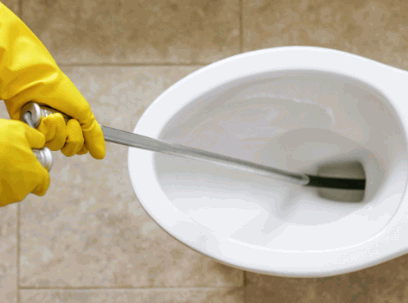
How To Prevent Toilet Blockages?
Preventing toilet blockages involves regular maintenance, proper disposal of waste, and avoiding the flushing of non-biodegradable items like wet wipes, excessive toilet paper, and children’s toys.
Regular Maintenance
Regular maintenance is crucial in preventing toilet blockages, ensuring that limescale and other build-up do not accumulate within the pipes and waste systems.
- One important step in maintaining your toilet’s optimal functionality is to perform regular deep cleaning using a cleaning solution specifically formulated for unclogging drains. These solutions help break down any existing blockages and prevent future build-up.
- Incorporating a monthly routine of using enzymatic cleaners can further aid in keeping the pipes clear by breaking down organic matter.
Remember to check the toilet’s internal components yearly for any signs of wear or damage, such as a deteriorating flapper or a leaking fill valve.
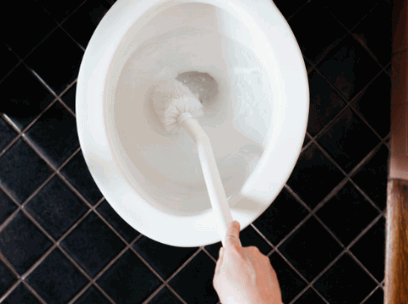
Proper Disposal Of Waste
Proper disposal of waste, such as using the appropriate amount of toilet paper and avoiding the flushing of construction waste, is essential in preventing blockages in the waste pipe.
Regarding household waste, it’s crucial to remember not to pour grease or oil down the plughole, as these can solidify and cause blockages.
- Instead, collect excess grease in a container and dispose of it in the rubbish bin.
- For items like sanitary products or wipes, it’s recommended to dispose of them in a designated bin rather than flushing them.
By following these simple guidelines, you can significantly reduce the likelihood of encountering plumbing issues due to improper waste disposal.

Avoid Flushing Non-Biodegradable Items
Avoiding the flushing of non-biodegradable items like wet wipes, cotton wool balls, and children’s toys is crucial for maintaining clear and functional toilet pipes.
When these non-biodegradable items are flushed down the toilet, they can accumulate in the pipes and lead to blockages and blockages.
Common household items that should never be flushed include dental floss, sanitary products, kitchen roll, and fat. Flushing these items can cause significant damage to the sewage system and the environment. Instead, these items should be disposed of in the bin.
It’s important to be mindful of what goes down the toilet to prevent costly plumbing issues and protect the ecosystem.


